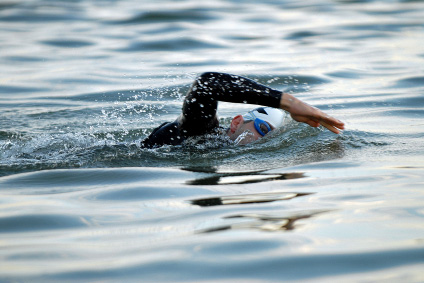Swimming Strokes are Rich in History
The history of swimming strokes is individualized and includes different timelines, even though some styles may be variants of others. There are four common competitive strokes: freestyle, backstroke, breaststroke and butterfly. Freestyle and backstroke are long axis strokes, while breaststroke and butterfly are short axis strokes. Kicking in flutter or scissor-style adds forward motion, but individual swimmer-style can lead to variants of these most efficient techniques.
Historically speaking, swimming dates back thousands of years and there are written and pictorial records that date back to the Stone Age. Swim stroke history of the most popular competitive swimming strokes are more recent historical accounts, however. Most of today's swim stroke history takes place in the 1800's and 1900's, as competitions based on speed became popular, primarily due to the Olympics.
Freestyle:
The swim stroke history of Freestyle swimming is tied to the "front crawl", which is still one of the quickest swimming styles and it is frequently used for training of competitive speed swimmers. As a variant of the style most popular with American Indian natives, today's freestyle stroke includes one arm in front of the other, to pull the body through the water, while kicking in alternating rhythm is part of the style.
Flutter or scissor kicks may be used, although most people believe that the freestyle stroke is the front crawl version that uses a flutter kick, as devised by Richard Cavill around the 1890's. Since he lived in Australia, the Freestyle stroke may also be called, "the Australian crawl", depending on who is talking about it. Before the Freestyle, the side-stroke was the most popular in swimming competitions, but during the early 1900's, the front crawl became known as the Freestyle stroke and the most common open water swimming stroke and the rest is history, as they say!
Backstroke:
The backstroke was eventually perfected by Australian swimmers, who bent their arms underwater to increase the horizontal, forward push. While the backstroke had always included a straight arm during the underwater push, from 1935 to 1945, this new technique became a swimming style that is now practiced all over the world. Since this innovation made it a quicker swimming stroke, it became widely used everywhere. It's said that the Brits didn't like getting having their face underwater and it's believed that European swimmers were the most proficient backstroke swimmers.
Breaststroke:
While it's believed that the breaststroke is a variant copy of the "front crawl", it was used in the late 1800's, during European swimming competitions, even in the side-stroke variation. There are some that say the breaststroke is derived from the Australian crawl or freestyle stroke, so you can see there may be controversy, when it comes to the proper origins. According to most timelines, it would appear to be the other way around, and it is the original open water swimming stroke!
While the front crawl involves a flutter kick, it is said that European versions used a scissor kick, since Brits were said to dislike any kind of splashing, during swimming competitions. It was said that the front crawl wasn't introduced to the Western world until 1902, although swimming became part of the 1896 Athens Olympics and the breaststroke was believed to be used. It becomes a question of which came first, to some that study swim stroke history, but it may depend on which country's swimming history you are reading.
Butterfly:
When it comes to swim stroke history, the butterfly is a fairly recent development, relatively speaking. It wasn't until 1952 that it was acknowledged as a separate swimming stroke, although it was introduced in the 1930's as another variation of the breaststroke. It was invented out of the desire to solve the slowest portion of the breaststroke-which was when the arms were brought forward, underwater. The butterfly stroke improved speed in competitions, even though it was more difficult to master.
Those that do the butterfly stroke in the best form will often keep their head down, but that leaves their face in the water, much of the time. For this reason, the butterfly isn't a preferred swimming stroke for certain people, even if it is a quicker version of the breaststroke, for those that use it properly in competitive swim events.
Butterfly swimmers make this stroke look graceful and easy, and it definitely gives an advantage to training for open water swim events.
Swimming Strokes Continue to Make History
When you are studying swim stroke history, you will find that some timelines overlap, depending on whether you are learning accounts from an Australian, European or American swimmer. Regardless of where these different competitive swimming strokes originated, they are now commonly used in competitions, all over the world. Most competitive swimmers will use the style and form that adds the most speed, whether they are in relays or endurance swimming competitions.
back to the top of swimming strokes page
Don't just build a website, build a web business!
Beauty is just a click away! Visit me, your Independent Beauty Consultant.
Have A Great Story About This Topic?
Do you have a great story about this? Share it!









